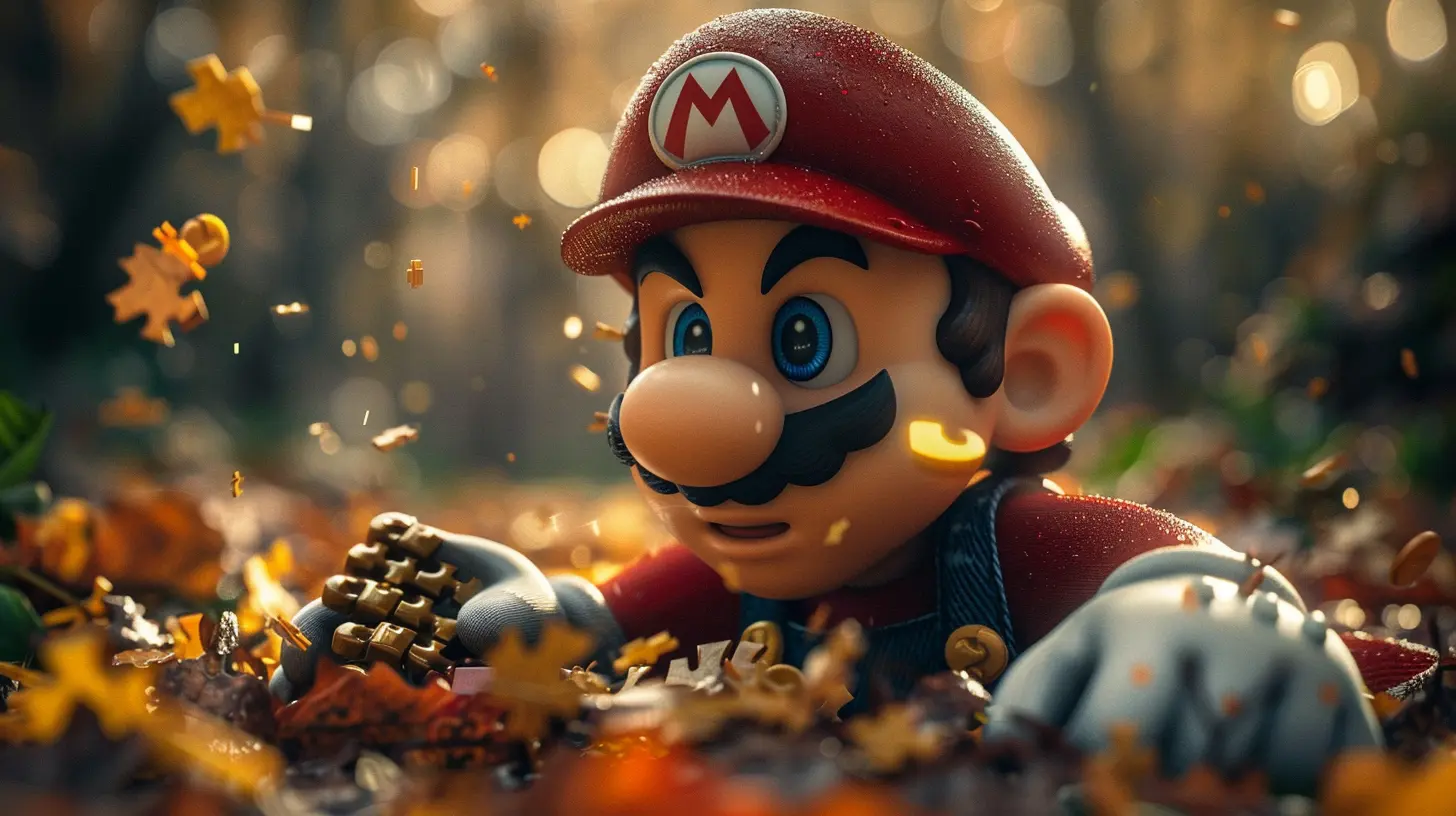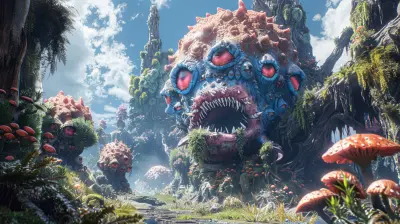The Influence of Puzzle Games on Other Game Genres
13 June 2025
Puzzle games have been around for decades, charming players with their mind-bending challenges, clever mechanics, and satisfying "aha" moments. But here’s a curveball you might not have thought about—how these games have quietly seeped into other gaming genres. From shooters to RPGs, puzzle game design has left its fingerprints all over. Surprising, right? Let’s dive into how puzzle games have influenced the broader gaming landscape and why that matters more than you might think. 
Why Puzzle Games Hold a Special Place in Gaming
Before we get into the nitty-gritty details, let’s start with the obvious—why are puzzle games so captivating? At their core, they're all about tickling your brain. They challenge you to think outside the box, test your problem-solving skills, and reward you when you figure things out. It’s like a full workout for your brain, but without the sweat (well, unless you’re stress-solving).Games like Tetris, Portal, and The Witness come to mind when we talk about iconic puzzle games. They’re straightforward yet incredibly engaging, delivering those “just one more try” vibes that keep us hooked. But their influence doesn’t end with their own genre—they’ve essentially become the blueprint for adding depth to other types of games. 
Cross-Genre Influence: Puzzle Mechanics in Other Games
Now, let’s get down to how puzzle games have crept into other genres. Some of these connections are obvious; others are a bit more subtle. Either way, you’ll probably find yourself nodding in agreement after going through these examples.1. Puzzle Mechanics in Action-Adventure Games
Think about your favorite action-adventure games. Pretty much all of them feature some kind of puzzle element. Picture The Legend of Zelda series—can you even imagine those games without their intricate dungeon puzzles? Solving these puzzles is just as important as battling enemies or collecting loot.Even newer blockbuster games like God of War (2018) feature clever puzzle sequences. Remember those moments when you had to freeze gears with your Leviathan Axe or manipulate time to open pathways? Without those mind-twisting elements, the game would lose a layer of depth and pacing. Puzzle mechanics bring a moment of calm, making the action-packed segments feel even more intense by contrast.
2. RPGs: Quest Design with Puzzle Layers
Role-playing games (RPGs) are another genre that owes a debt of gratitude to puzzle games. Modern RPGs like The Witcher 3: Wild Hunt and Divinity: Original Sin 2 weave puzzles seamlessly into quests. You're not just battling monsters or fetching items; you're deciphering riddles, finding hidden clues, or solving environmental puzzles to progress.This not only spices up gameplay but also makes the world feel more interactive and alive. It’s one thing to follow a breadcrumb trail to the next quest marker. It’s another thing entirely to solve a riddle scrawled on an ancient stone to uncover a hidden treasure. Puzzle-like moments add a certain magic to RPG storytelling.
3. Shooters with a Twist
You’d think shooters wouldn’t lend themselves to puzzles, but you’d be wrong. Tactical shooters like Portal 2 (yes, it’s technically a puzzle game, but it’s also got shooter elements) take this idea and run with it. Even more traditional first-person shooters, like Halo and Doom Eternal, incorporate light puzzle-solving into their level designs.Platforming sections, switches you have to interact with, or even figuring out enemy weaknesses—all of these are puzzle-inspired elements. They add another layer to the otherwise fast-paced gameplay, forcing players to slow down and think.
4. Survival Horror’s Brain-Teasers
When it comes to survival horror games, puzzles are practically mandatory. Why? Because they add tension and make the experience more immersive. Classics like Resident Evil and Silent Hill are filled with puzzles that block your progress until you figure them out—whether it’s finding the right key or deciphering cryptic codes.These puzzles aren’t just filler—they’re integral to the atmosphere. The act of solving a puzzle with a zombie groaning in the distance or unsettling music looping in the background creates a level of tension that combat alone can’t replicate. 
Why Game Developers Love Puzzle Elements
So, why do game developers keep sneaking puzzle elements into other genres? The answer is pretty simple—they make games more engaging.Imagine playing an action game where the gameplay is nothing but running and shooting. It’d get stale after a while, wouldn’t it? Adding puzzles breaks up the monotony, giving players a mental challenge to solve amidst all the chaos. It’s like a palate cleanser between courses at a fancy dinner—refreshing and necessary.
Plus, puzzle mechanics promote exploration. They encourage players to interact with the environment, look for hidden clues, and experiment with game mechanics. In turn, this creates a more rewarding experience where players feel like they’ve earned their progress. 
Puzzle Games and Cognitive Benefits in Modern Gaming
While we’re at it, let’s not ignore the cognitive benefits of puzzle-inspired gameplay. Puzzle games—whether pure or blended into other genres—are known to improve problem-solving skills, memory, and even spatial awareness. These benefits translate into other parts of your life too (hello, real-world multitasking).For example, games like Zelda or Portal force you to think critically under pressure. As you solve challenges in-game, you’re essentially training your brain to approach problems from different angles. It’s like mental yoga, except the poses are riddles and physics-based challenges.
The Future of Puzzle Integration in Gaming
Looking to the future, it’s safe to say that puzzle game mechanics won’t be going anywhere. In fact, they’re likely to evolve and become even more integrated into other genres.With advancements in technology like ray tracing and AI, developers have more tools than ever to create intricate puzzles that feel realistic and immersive. Imagine a game where AI crafts dynamic puzzles based on your playstyle, or environments that change in real-time as you solve challenges. That’s the level of innovation we might be heading toward.
But here's the kicker—the influence of puzzle games doesn’t stop with the mechanics. They’ve also shaped how stories are told in games, how levels are designed, and even how players interact with in-game worlds. In many ways, puzzle games have become the DNA of modern gaming, and their legacy continues to grow.
Wrapping It All Up
So, there you have it. The influence of puzzle games on other game genres is undeniable. From action-adventure games to RPGs, shooters, and even survival horror, puzzle mechanics have added depth, challenge, and variety across the board.Next time you’re scratching your head over a tricky puzzle in your favorite game, take a moment to thank the puzzle genre for making gaming what it is today. It’s not just about solving problems—it’s about making games more engaging, memorable, and downright fun.
all images in this post were generated using AI tools
Category:
Puzzle GamesAuthor:

Stephanie Abbott
Discussion
rate this article
3 comments
Sari McDowell
I'm fascinated by how puzzle mechanics seep into genres like RPGs and shooters! What specific games showcase this influence best?
June 16, 2025 at 4:20 AM

Stephanie Abbott
I recommend checking out *The Legend of Zelda: Breath of the Wild* for its environmental puzzles in an action-adventure context, and *Portal 2* for its unique integration of puzzles within a narrative-driven shooter framework. Both highlight how puzzle mechanics enhance gameplay in diverse genres!
Maxine McLaurin
Puzzle games enrich gameplay dynamics across various genres creatively.
June 15, 2025 at 3:30 PM

Stephanie Abbott
Thank you! I appreciate your insight on how puzzle elements enhance gameplay dynamics in diverse genres.
Marissa McNaughton
Puzzle games: the sneaky ninjas of the gaming world, quietly shaping genres while we’re busy matching gems!
June 14, 2025 at 5:16 AM

Stephanie Abbott
Absolutely! Puzzle games may seem subtle, but their innovative mechanics have significantly influenced various genres, proving that they are indeed the unsung heroes of gaming evolution.



